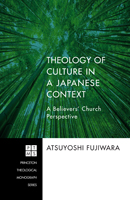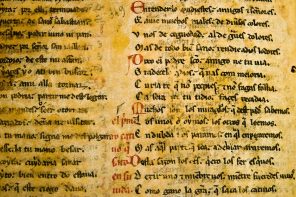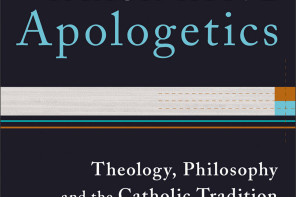 Atsuyoshi Fujiwara. Theology of Culture in a Japanese Context: A Believer’s Church Perspective. Princeton Theological Monograph Series. Eugene, OR: Pickwick Publications, 2012, xxii + 393 pp., £38.00/$48.00 paper.
Atsuyoshi Fujiwara. Theology of Culture in a Japanese Context: A Believer’s Church Perspective. Princeton Theological Monograph Series. Eugene, OR: Pickwick Publications, 2012, xxii + 393 pp., £38.00/$48.00 paper.
This book is a fine example of how diverse voices can improve the field of theology. In this dissertation for the University of Durham, Fujiwara, who is a pastor in Tokyo, appropriates the transformational approach to culture espoused by H. Richard Niebuhr and the believer’s church model of John Howard Yoder and Stanley Hauerwas to interpret five centuries of Christianity in Japan. Fujiwara’s chapters on Niebuhr, Yoder, and Hauerwas supply a necessary though perhaps excessively detailed foundation (though not unusual for a dissertation). What will interest most readers is Fujiwara’s analysis of the three waves of Christian activity in Japan.
The opening chapter observes that while Niebuhr preferred the model, “Christ the transformer of culture,” he never actually said how the church might accomplish this transformation.[p. 31] Fujiwara helpfully advances Niebuhr’s position by stating three factors that may cause cultural transformation: personal conversion, corporate conversion, and superficial adoption. The first two are rather obvious but the last one might come as a surprise. Nevertheless, Fujiwara proves his case from postwar Japan. After World War II, the Allied Powers gave Japan a new constitution that protected human rights and laid the foundation for Japan’s economic recovery. This constitution was grounded in the residual Christianity of the West, but it was enforced upon an almost entirely non-Christian nation. And it worked. Thus, Fujiwara concludes, “The world can accept some Christian influence to improve social situation without confessing that Jesus Christ is Lord.”[p. 43]
Still, Fujiwara argues in the second chapter, with a reliance on Yoder and Hauerwas, the most enduring way to transform culture is with a community of committed Christians. Lasting change does not come from the top down, as with a state church. Only those who voluntarily submit to the Lordship of Christ and then unite with likeminded believers are able to create the alternative community that can be salt and light. Having established the importance of the believers’ church, Fujiwara then uses this model to evaluate the history of Christianity in Japan.[pp. 57-59, 157-60]
The final three chapters examine three different eras: Roman Catholic missionary activity in the sixteenth and seventeenth centuries, the opening of the country to the West in the nineteenth century, and the aftermath of Japan’s defeat in World War II. Fujiwara noted that the Jesuits of the sixteenth century brought education, an indefatigable spirit, and a willingness to respect and accommodate native traditions. Nevertheless, Japan ultimately rejected this new religion, forcing the new Christians, most of them common folks or peasants, into underground house churches. This nascent movement remained small, but vibrant, as the poor yet educated believers encouraged one another to endure suffering.[pp. 204-7]
The second wave occurred from the middle of the nineteenth to the middle of the twentieth century, as Protestant missionaries from America and Great Britain brought an imperialistic gospel to Japan. Unlike the earlier Jesuits who respected Japanese traditions, these western triumphalists equated Christianity with being on the winning team. They offered the gospel as a means for Japan to modernize and become wealthy. The Japanese who converted did so to help their nation, so when nationalism meant fighting the West during World War II, many Japanese quickly discarded their faith.[pp. 270-72]
Finally, Fujiwara notes that during the period between 1945-85 the Japanese church enjoyed religious freedom and the rise of indigenous theologians who, like himself, were educated in the West and then returned to Japan. He concludes that the church will only thrive and transform Japan as it develops the prophetic edge of the believers’ church model. It must resist any magisterial, triumphalistic or nationalistic directions.[pp. 358-60]
Even if readers are not directly interested in Japanese culture, Fujiwara’s provocative book has something to teach Western Christians. Perhaps we in the West are more sanguine toward culture because ours has a residual Christian foundation. Fujiwara’s work warns us that a believers’ church model, though often denigrated as sectarian, is most appropriate when the dominant culture is pre-Christian. It may also be the best model when the culture is post-Christian, as Western Christians may soon learn.
Review by Michael E. Wittmer, Professor of Systematic Theology and Director of the Center for Christian Worldview, Grand Rapids Theological Seminary of Cornerstone University, Grand Rapids, MI (USA)
Image Credit: Wipf and Stock




